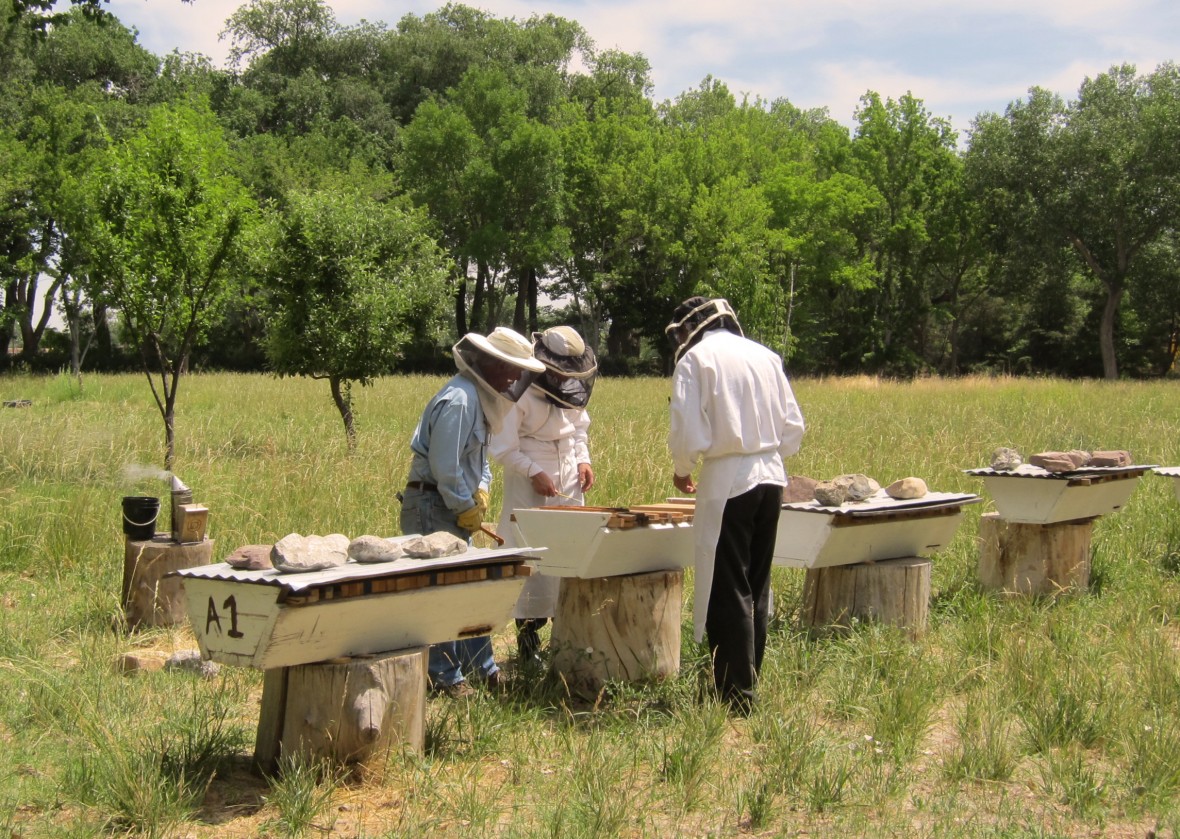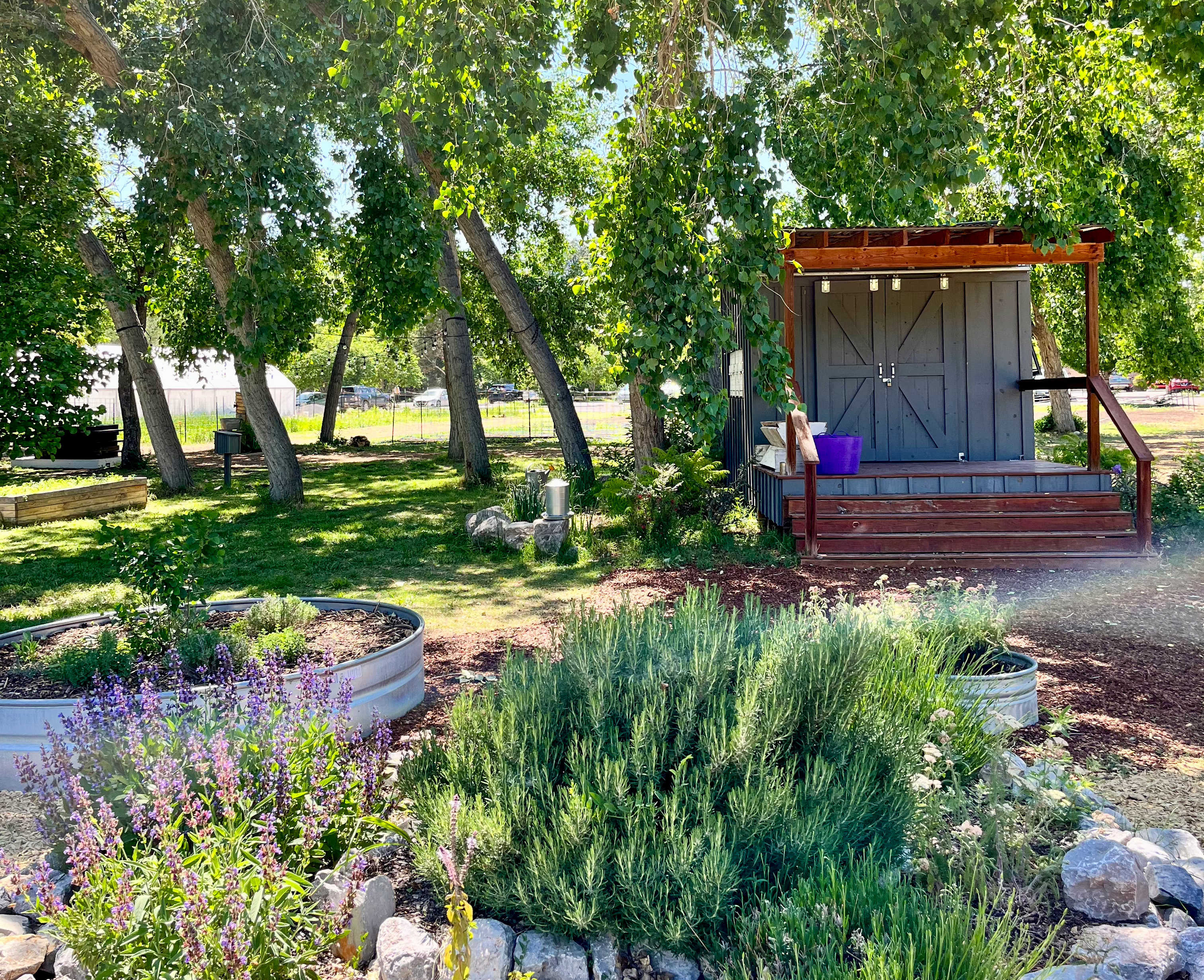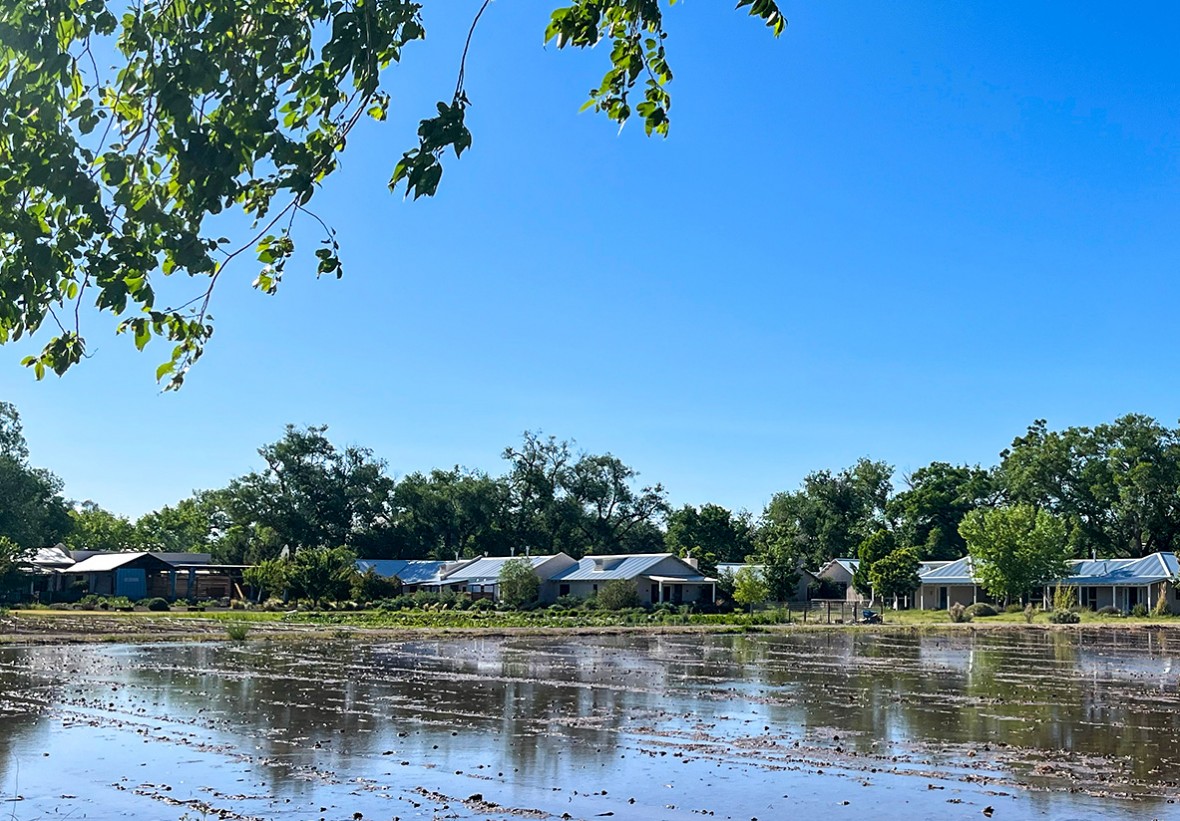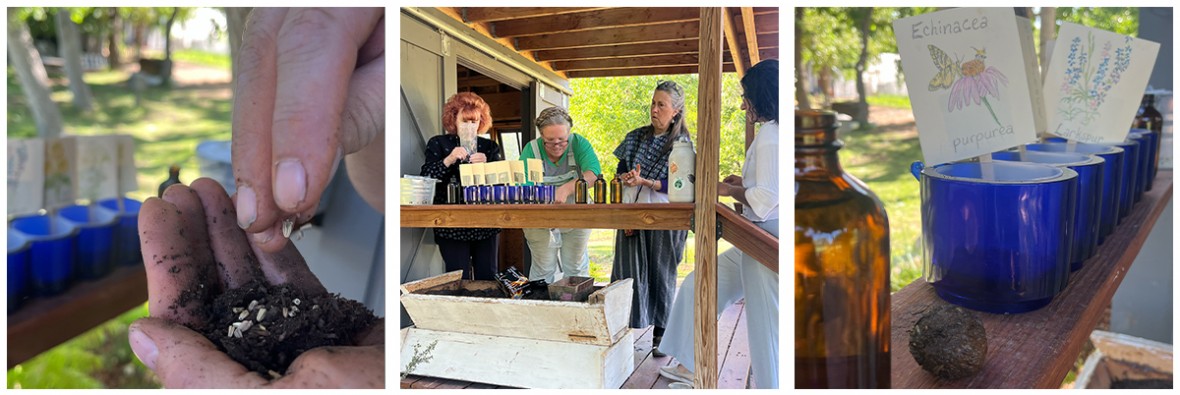
In the warmth of late spring, the gentle hum of bees rises from our fields and historic gardens. This sound signals more than summer's return—it reflects the vitality of a landscape carefully nurtured through regenerative farming and a deep respect for nature. Our approach to land stewardship depends on a thriving community of pollinators.
 Beekeeping at Los Poblanos began in 2005, when Dr. Armin Rembe—affectionately known as Farmin’ Armin—introduced Top Bar hives to the property. His deep respect for the land and passion for ecological balance continue to shape our practices. Several of Armin’s original hives have been restored and now sit nestled among the lavender, alive with activity. In 2019, we expanded our program with a traditional Slovenian bee house, built using AZ hives that allow for gentle inspections with minimal disturbance. The structure is now maintained by our Head Beekeeper, Lara Lovell.
Beekeeping at Los Poblanos began in 2005, when Dr. Armin Rembe—affectionately known as Farmin’ Armin—introduced Top Bar hives to the property. His deep respect for the land and passion for ecological balance continue to shape our practices. Several of Armin’s original hives have been restored and now sit nestled among the lavender, alive with activity. In 2019, we expanded our program with a traditional Slovenian bee house, built using AZ hives that allow for gentle inspections with minimal disturbance. The structure is now maintained by our Head Beekeeper, Lara Lovell.
In addition to the lavender fields, landscaping and cutting gardens across the property, we carefully plant for pollinators. The beds beside the Slovenian bee house are filled with flowers that bloom from early spring to late autumn. This year, we also planted a field of native grasses and wildflowers selected for their resilience and biodiversity. This mix includes species that bloom throughout the growing season, offering a consistent source of nectar and pollen. To help these native seeds take root, we employed careful flood irrigation using our historic acequia system. By directing water in short, controlled intervals, we were able to nourish the new field while honoring the traditional methods that have shaped agriculture in the Rio Grande Valley for centuries.

On May 20, we celebrated World Bee Day with a hands-on workshop where team members created seed balls—small clusters of native wildflower seeds wrapped in compost and clay. "The best thing you can do for bees," Lara shared, "is plant for them." Her advice: choose regionally native flowers with open blooms that are easy for bees to land on. These hardy plants thrive with minimal care and offer bees a dependable source of nectar and pollen.
To make a pollinator seed ball, combine three parts compost with one part clay. Add native wildflower seeds and just enough water to hold the mixture together. Roll into small balls, allow them to dry, and either plant them directly in your garden or scatter them thoughtfully in places where flowers can flourish. With time and rainfall, they will awaken into blooms that feed pollinators and beautify your surroundings.

From these buzzing hives also comes a sweet reward: honey. This golden honey, rich with botanical character, captures the flavor of our fields. Because our yields are small, we do not offer Los Poblanos honey for sale. Instead, we proudly partner with Bear Canyon Honey, founded by Matt Strong, who works with local beekeepers and maintains a network of hives pollinating native plants, backyard gardens and agricultural fields from Taos to Las Cruces. This collaboration supports New Mexico’s beekeeping community and reflects our commitment to sourcing with integrity. Taste this raw liquid gold for yourself with our New Mexico Honey, Lavender Honey or Red Chile Honey.
Want to dive deeper into the world of bees? Join us on Wednesday, May 28 for an engaging conversation with Head Beekeeper Lara Lovell and members of the New Mexico Beekeepers Association. Together, we will explore practical ways to support pollinators and the vital role bees play in our ecosystem. Tickets are available on our events calendar.
